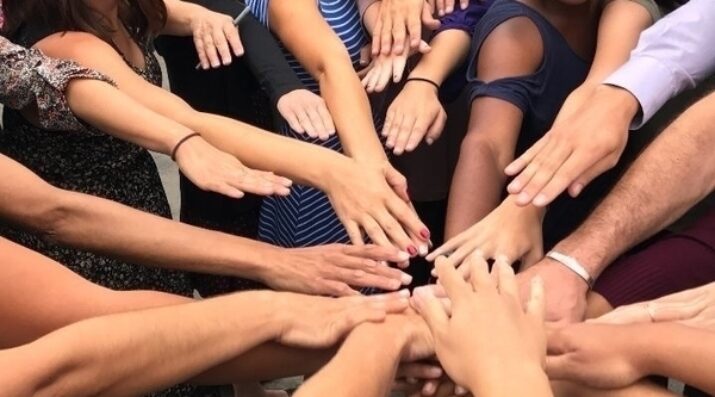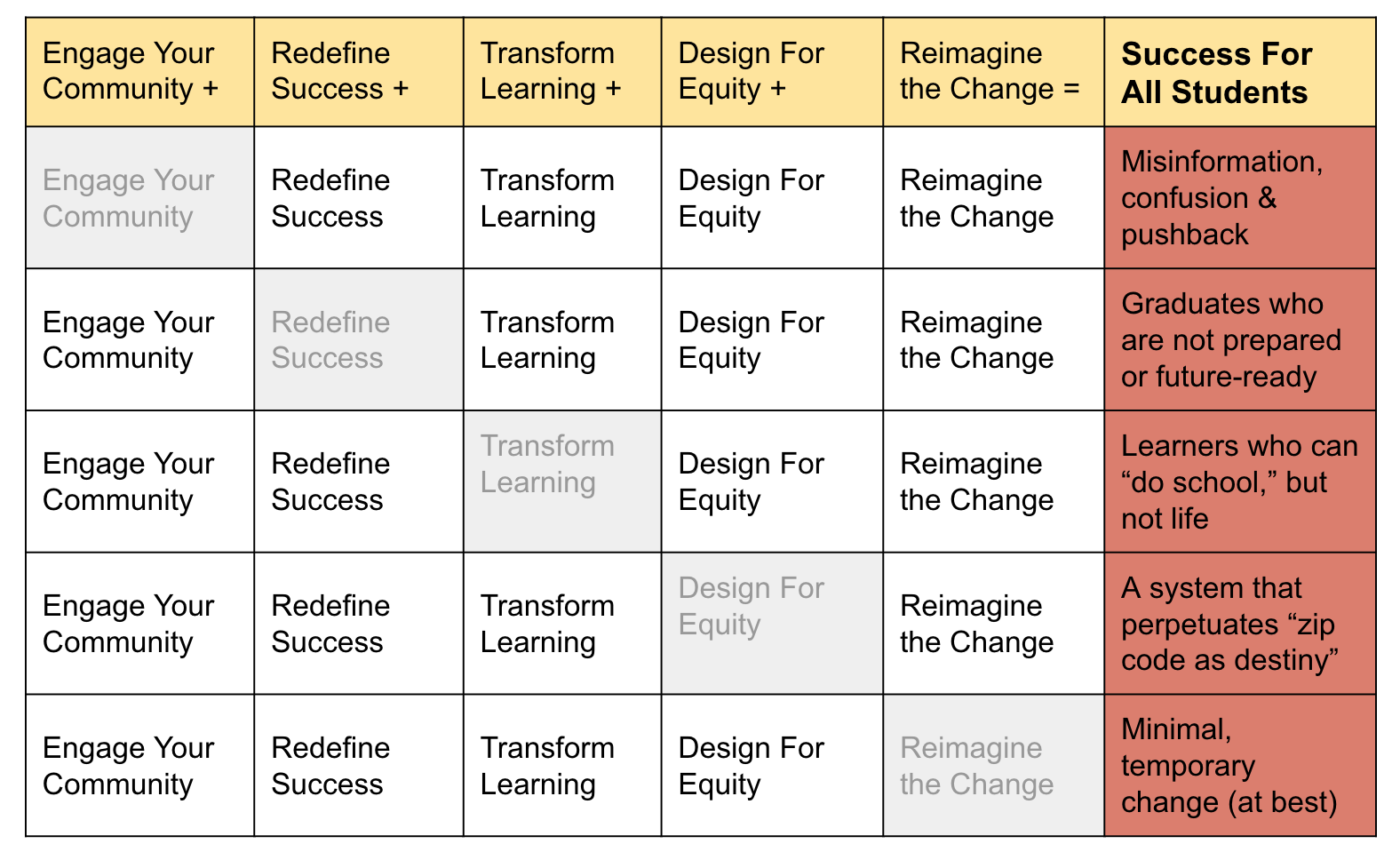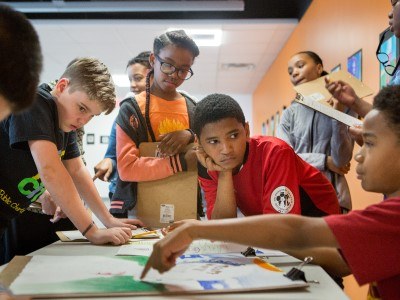Why Schools Need to Change
In Your Hands Lie the Keys to Igniting Next Gen Learning
Topics

Today’s learners face an uncertain present and a rapidly changing future that demand far different skills and knowledge than were needed in the 20th century. We also know so much more about enabling deep, powerful learning than we ever did before. Our collective future depends on how well young people prepare for the challenges and opportunities of 21st-century life.
What NGLC has learned from 9 years of supporting educators leading the transformation of learning in K-12 schools fits right in your hand, with 5 essential dimensions of next gen learning.
"Daunting." "Mind-bending." "Unbelievably complex." "Hard, hard, hard." "The single toughest professional undertaking I've ever been part of."
Those are the words of courageous, visionary educators who have pioneered fundamentally different pathways for their schools and communities—pathways tuned to the skills and mindsets demanded by 21st-century life and shaped by the science of learning.
So are these—from all of the same people:
"I could never go back." "Best work I've ever done." "Restored my passion for education." "Profoundly rewarding." "It's giving me hope."
These perspectives come from educators with whom Next Generation Learning Challenges (NGLC) has collaborated across nearly a decade.
After nine years and nearly $100 million in competitively awarded sub-grants to educators, schools, colleges, and non-profits, all to support their efforts to define, create, measure, and spread next gen learning, what's the big takeaway?
This: To succeed, next gen learning requires simplicity on the far side of complexity.
Oliver Wendel Holmes once wrote: "For simplicity on the near side of complexity, I would not give a fig. For simplicity on the far side of complexity, I would give my life."
The first two to three decades of the standards movement represent simplicity on the near side of complexity—calamitously so. It has largely ignored all the advances in the science of learning and development that have emerged since the 1980s, as well as everything that every educator and parent knows about how children grow and learn differently from each other—in short, complexity—in favor of the massively blunt and inadequately understood accountability and testing mandates of No Child Left Behind. Thus did a laudable goal in concept (let's hold all kids to higher academic standards) lead unwittingly to a tidal wave of bad practice (narrowed curricula, vastly overprioritized test prep, and corrupt incentives leading too often to outright cheating).
That is a hammer for which everything looks like a nail. Simplicity that stops egregiously short of appreciating the complexity of the task.
But: Holmes would give his life for simplicity on the far side of complexity, meaning: forms of simplicity that carry all of its attributes for broadening understanding, rallying support, and making progress attainable, and that incorporate and integrate the deep complexity of the task at hand.
So would the next gen educators we've been working with. It's what they've been working so furiously toward in all their many, varied ways.
So should any educator or community leader seeking to transform schools and learning toward genuine 21st-century outcomes for kids.
What does simplicity on the far side of complexity look like, in practice?
NGLC's translation of everything we've learned from next gen educators is a simple one that incorporates vast complexity within it. Moreover, it symbolizes many of our most powerful and important human capacities: to communicate, to join together, to make things. To hold fast—and let go.
I'm talking about: your hand.
Observing the work of leading next gen educators, we have come to see that there are five interdependent, closely cooperating, utterly essential dimensions of designing and carrying out next generation learning effectively. One for each finger and the thumb, as follows:
Redefining student success: The forefinger
We use our forefinger to point the way forward. Developing a vision for a new North Star of 21st-century student success is the jet fuel that ignites people's imaginations, gives them an urgent "Why," informs the work, and sustains momentum over time.
Reimagining the change: The middle finger
The middle finger stands tall and serves to anchor all the others. So do the next gen change-management processes being used by next gen educators. In valuing mastery, autonomy, purpose, and service over carrots, sticks, mandates, and compliance, these change processes reflect the central goals and strategies of next gen learning. Educators and their schools are being the change they are seeking for kids. In partnership with the forefinger, the middle finger can signify both Victory and Peace; with the thumb, the "snap" of an idea or accomplishment. On its own, the middle finger can send a sometimes necessary (or at least, personally therapeutic) message. These metaphors all express important elements in managing change effectively. NGLC calls these change strategies (when directed toward a deep reimagining of education’s goals, learning models, structures, and processes) transformation science.
Engaging the community: The ring finger
Many cultures use the ring finger to signify partnership and commitment. Next gen learning leaders tell us that the minute they get complacent in engaging their communities, the next minute they're in trouble. Next gen learning requires broad awareness of new goals, understanding of the reasoning behind new practices, and wide opportunities to participate productively. Our ring finger tends to work in close association with the finger on either side. The same is precisely true for next gen learning.
Designing for equity: The little finger
Ask any piano player. The little finger of the left hand plays an all-powerful role as, most often, the tone-setting, foundational bass note of the chords, harmonies, and melodies being produced by all the other fingers and thumbs. So it is with equity in schools—ensuring that all children are deeply known as individuals and equally well fitted (to use Todd Rose's construct from his book The End of Average) with the learning experiences and supports they need to thrive in a complex, changing world. That includes the commitment to design and provide "equal-fit" supports for children growing up in trauma, in poverty, and in cultures with a legacy of systemic racism—challenges that are present and arguably expanding for kids of color and kids of poverty today.
Transforming learning: The thumb
Our miraculous, opposable thumb makes everything possible and gets a lot of it done, generally, in partnership with the fingers. It is literally where all the action is. Likewise, the other four dimensions of next gen learning don't mean much of anything until they begin to show up in actual practice and to transform the experience (and skill sets, and mindsets) of students in meaningful ways. Our thumbs are spectacularly nimble (think of texting on smartphones) and almost unimaginably strong (press yours against your forefinger knuckle and admire that muscle). Transforming learning requires no less, across a wide spectrum of change-strategy grain sizes from the "fractal" (nimble coaching of an individual teacher's practice in personalizing learning) to the grand (enabling a school's leadership team to spend three years designing and executing a transformation plan). Right? Thumbs-up!
Though Django Reinhardt (the eight-fingered originator of gypsy jazz) might beg to differ, it's hard for most of us to imagine our hands operating effectively without the use of all five digits. The same is true for the five dimensions of next gen learning. This table shows the risks when any one of these dimensions is missing:
Risks in Under-Addressing Any of the Five Essential Dimensions of Next Generation Learning

Concept adapted by NGLC from Knoster, T. (1991) Presentation in TASH Conference, Washington, DC.
One final, important point. Our hands say something else about us that is also true of the successful design and implementation of next gen learning. We are unique. Like fingerprints, executing next gen learning reflects the singular identity of the community seeking to transform. Words like "replication" simply don't apply. That's not to say that every school and community has to invent all of it from A to Z. Communities need to benefit from next gen learning's rapidly expanding array of resources, strategies, platforms and tools, research findings, and outside expertise to transform successfully. But the change has to be led by them (leaders, teachers, students, community), instead of being done to or for them—another slam of reform being dropped on them like a grand piano shoved through a tenth-story window.
That is our collective work of the next five years and beyond: helping schools, districts, CMOs, and communities recognize that in order to dramatically lift student learning, engagement, sense of purpose, and their trajectories after high school, they all need to become the change they seek for kids. Easy to say. Hard—but doable—to accomplish.
Photo courtesy of Thrive Public Schools.
This article was originally published on the Next Gen Learning in Action blog on Education Week. It has been slightly updated.




